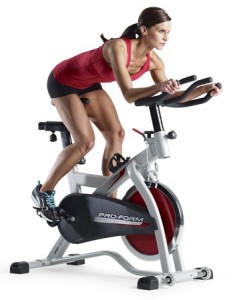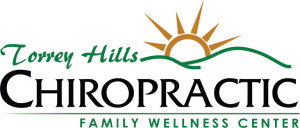Improve Your Cardiovascular Fitness with Interval Workouts
 Interval workouts are recommended by the Mayo Clinic for burning more calories, for improving your cardiovascular fitness and for keeping variety in your workout program. Intervals are your RX for health! Interval workouts are simply doing short bursts of intense exercise between short periods of recovery. Intervals provide a completely different physiological response than aerobic exercise which is considered “sustained” exercise. Interval workouts are considered “aerobic” or without oxygen. That is why you will feel out of breath when you do interval work.
Interval workouts are recommended by the Mayo Clinic for burning more calories, for improving your cardiovascular fitness and for keeping variety in your workout program. Intervals are your RX for health! Interval workouts are simply doing short bursts of intense exercise between short periods of recovery. Intervals provide a completely different physiological response than aerobic exercise which is considered “sustained” exercise. Interval workouts are considered “aerobic” or without oxygen. That is why you will feel out of breath when you do interval work.
Intervals are less likely to cause discomfort after your workouts, “During intense exercise, muscles produce waste products that can contribute to muscle soreness. Too many accumulated waste products can make exercise painful and exhausting. But by alternating bursts of intense exercise with easier intervals, you’ll help reduce the buildup of waste products in your muscles. The result is more comfortable exercises,” says Mayo Clinic.
The example the Mayo Clinic gives is doing 30 seconds of a fast burst of exercise followed by 30 seconds of normal intensity and then increasing to 2 to 3 minute bursts. I would recommend doing the 30 second interval for all of your intervals and once you are in good condition you can even shorten them to 20 second intervals. Longer than 60 seconds doesn’t challenge the cardiovascular system and the mitochondria (those organelles in the muscle cells than convert glucose and oxygen to energy) as much.
The general rule of how many intervals to do is to do more when the intensity is not as intense (like when you are just starting out) and fewer when the intensity is very high. On a scale of 1-10 and 10 being the hardest you can possibly work, intervals should be between 8.5 and 9.5. Doing aerobic work is usually around 6.5 to 7.5. When doing high intensity intervals, give you body at least 48 hours of rest between workouts. Very high intensity interval workourts can be done once a week with excellent results!
A total of about 8-12 thirty second intervals will take 8-12 minutes. Add your 5 minute warm up and 3 minutes to cool down and you will spend less than 20 minutes and get MORE benefit after the workout. After your interval workout there will be something called EPOC (Excessive Post Exercise Oxygen Consumption) which does not occur from aerobic exercise. That results in your body continuing to burn calories many hours after your workout.
The easiest machines to use for intervals are a rowing machine and a bike. You can also do a run, jog or use squats. It’s trickier to use a treadmill or elliptical for intervals but it can be done. No matter what method you chose, you will benefit greatly from doing anaerobic interval work!
For more information about how Interval Training can help you achieve your goals, contact Enid Fox at Fitness.BCC@bayclubs.com.
______________________________________________________________
Enid Fo x brings a unique perspective to her work. She has a B.A. in biology and 22 years of experience as a medical technician for kidney disease patients at El Camino Hospital. At age 46, she made a career change and became a certified Health Fitness Specialist with the American College of Sports Medicine. After two years at Tempus Clinic as a Personal Trainer, she took on the added role of Director of Nutrition for four years. TempusClinic was a physician supervised medical program using exercise, nutrition and stress management to prevent, manage and reverse chronic diseases. Her current role as a Personal Trainer allows her to practice true preventative healthcare. She has been a Personal Trainer at Courtside Club for nine years and is trained in the Classical Pilates Reformer.
x brings a unique perspective to her work. She has a B.A. in biology and 22 years of experience as a medical technician for kidney disease patients at El Camino Hospital. At age 46, she made a career change and became a certified Health Fitness Specialist with the American College of Sports Medicine. After two years at Tempus Clinic as a Personal Trainer, she took on the added role of Director of Nutrition for four years. TempusClinic was a physician supervised medical program using exercise, nutrition and stress management to prevent, manage and reverse chronic diseases. Her current role as a Personal Trainer allows her to practice true preventative healthcare. She has been a Personal Trainer at Courtside Club for nine years and is trained in the Classical Pilates Reformer.
Weight training has always been an integral part of her own fitness program and in the early 1980’s she was a competitive bodybuilder. She traveled with medical and social services delegations to Russia in the 1990’s. Enid lives with her husband of 39 years and their three parrots, Harry, Kita and Gypsy.
Enid specializes in personal training for people with chronic health conditions including Type 2 diabetes, autoimmune diseases, fibromyalgia, cancer, heart disease, osteoarthritis, and osteoporosis. Other areas of interest are menopause and older adults.










You must be logged in to post a comment Login